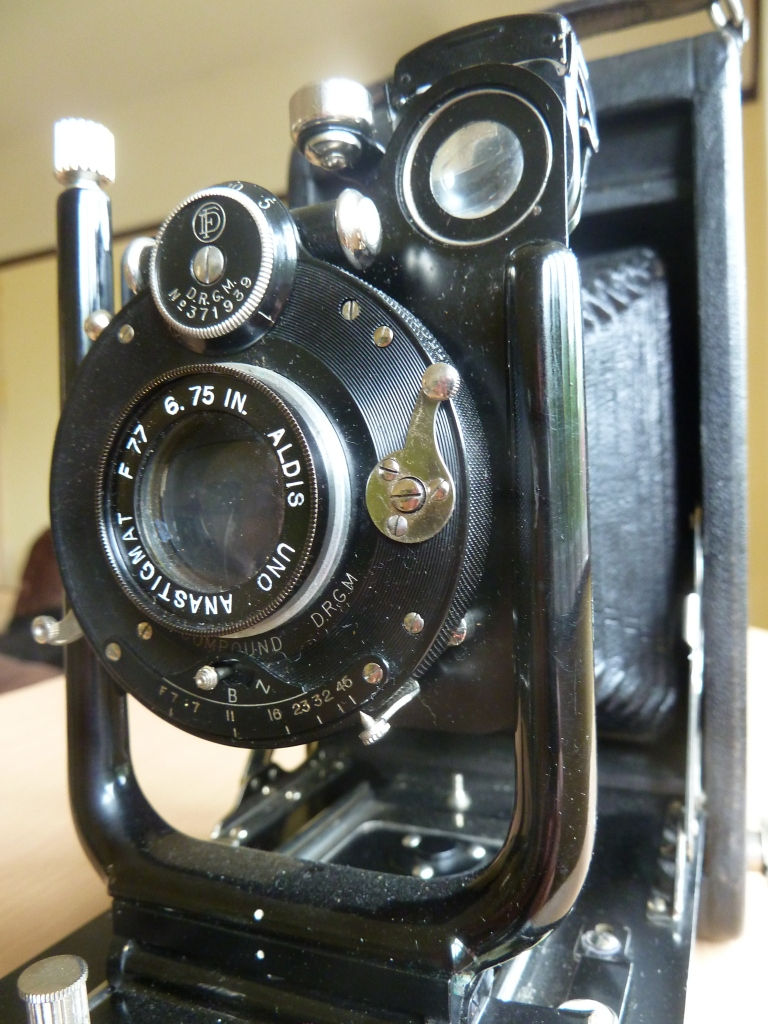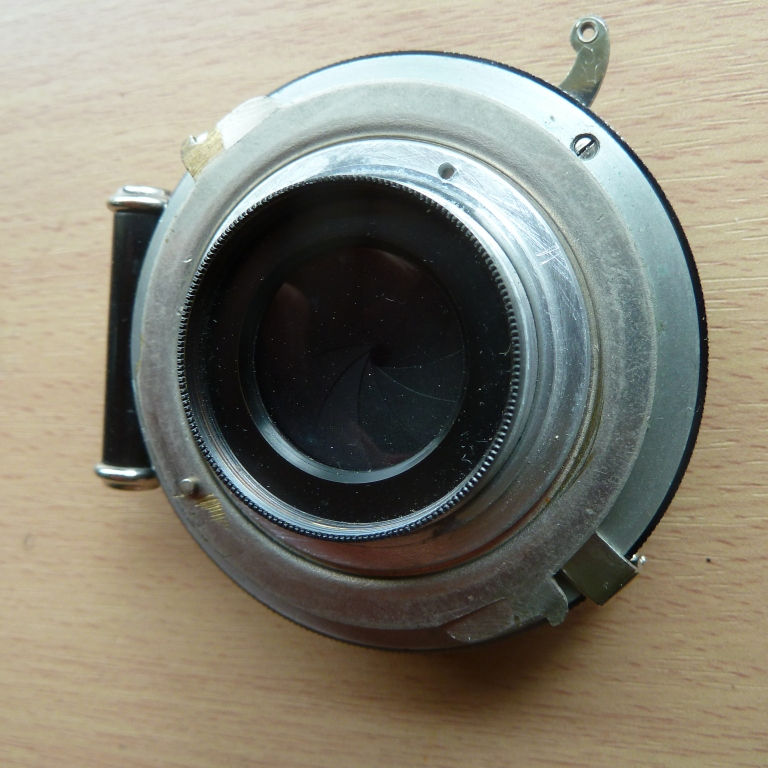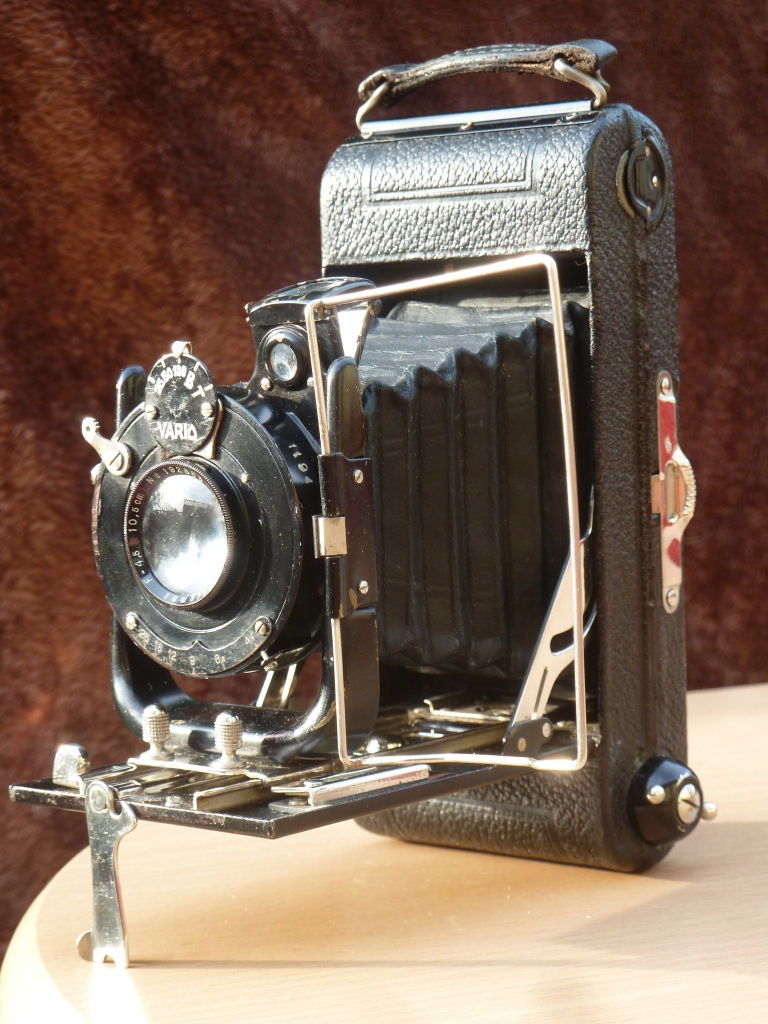Butchers The Carbine a roll film camera with provision for sheet film or plates.
- Kamera Ostalgie

- Aug 11
- 4 min read
Updated: Sep 20

Still searching for the elusive Weltaflex, but on todays search I found this ! So whilst it is out, lets have a quick look at it. Now I'm no expert on early Butchers cameras, so there might be a bit of guesswork here, but it looks fascinating, so lets have a look at it and see what we have.

It says on the side, Carbine, on a brown round circular disc. But there is no number given, usually it will say on it somewhere something like No 4b Carbine or similar, but there is nothing on this camera at all to tell us which model it actually is.

Just Carbine !

Again on the handle just Carbine, that is it ! The body number is D 25923 and this is stamped in 3 different places! But no name!

Inside the leather case we go a step further, it is called here 'The Carbine', so we have an extra The ! but still no number!

The shutter body gives us No 302455

The shutter has the logo FD so it is a F. Deckel shutter made in Munich Germany and with the little air cylinder sat on top behind the speed dial it is a Compound shutter.

The Compounds came out in around 1904 and were phased out in favour of the Compur shutter just before the first World War! So that helps us date the camera a little. So I think we can say that this big lump of a camera is of German manufacture and pre WWI.

Lets look at the back, at first glance it looks conventional enough, typical roll film camera, but if we look closely there is a rectangle set into the back of the camera. What is it for? Well if we press down on what looks like a screw at the top right hand corner, its sprung, and allows the back to slide up and out using the little catch with two rivets.

So you can slide this out and replace it with a frame that holds a ground glass and it becomes a folding plate camera. Unfortunately you hand to buy these as extras and this example does not have them which is a shame. I think that there was also provision for using sheet film, but of course also an extra! However if you could afford the extras then this was just some versatile piece of kit for its time.

Here on the pic above at the bottom right of the picture is the sliding metal door that conceals a square red window for when you are winding on using roll film ! Neat.

Open the back and you can see wooden spools sat in neat alloy frames, now that's engineering.

If you were wondering how the focus would work with films and then thicker glass plates, there is a catch where you unscrew the fastener and slide the focus rail to either film or plates!

Ingenious or what?

Lets look again at the lens, an Aldis Uno Anastigmat of 6.75 inches and f7.7! I know, you can't get more British than an Aldis lens can you? Butchers were clever it looks like they bought these in semi knockdown form without a lens, then added the Aldis Uno to them back in Great Britain! Crafty. I think they did a similar thing with the American market fitting American lenses. But is that not a lot of faffing about fitting lenses, setting them all up etc? Yes and no, look at this.........

One flick of the lever a quick twist and your Aldis is ready to go!

Too easy !

Good for servicing and repairs too ! But there is more, you could buy this camera with various lens shutter combinations before WW1. So you could fit the Houghtons Carbine with top quality German and British lenses if you so wished! What a great concept.

But there is more, the Carbine came with a rising and falling front, as illustrated here and side to side swing which are really useful features if you are using the plates and ground glass option! No converging verticles with this little beauty!

But little it is not ! It stands 24cm high, is 12.5cm wide and weighs in at 1186g ! It is a beast, it is more or less postcard size in format, maybe just a tad smaller, so this takes large images on plate or film! In it's day these German Houghton Carbines must have been one hell of a camera. Compare it to the Balda Baldi for size.

The beast was not cheap though, the year war broke out it would have set you back five pounds seven schillings and sixpence, but if you wanted it with a Zeiss Tessar you would have had to part with over ten pounds, serious money in 1914.
Just think what could have been continued with this British / German cooperation if our idiot politicians had not caused the two countries to spend the next few years killing each other by the million.
Before the war this British German cooperation in camera making was quite common, the best example was Newman and Guardia, who at that time were, with their Sibyl, producing the best folding cameras bar none, and they all were fitted with the best lenses that Germany could offer.
I hope you enjoyed this little ramble !
Amazing how far we can ramble when we just find something in a box, I very nearly just put it back ! Maybe I should have done!
Take care,
Phil



